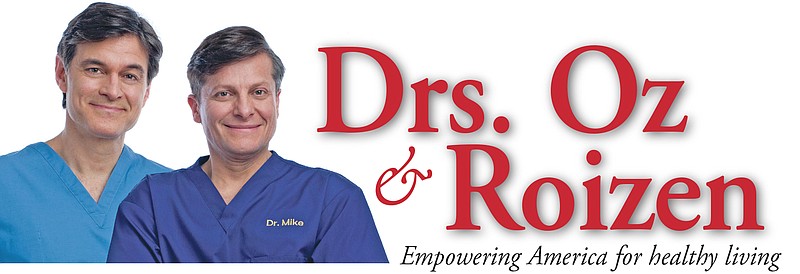Newly analyzed Medicare data on more than 10 million people shines a bright light on just how widespread the most life-threatening form of nonalcoholic fatty liver disease is in this country.
There are two forms of NAFLD: simple fatty liver and nonalcoholic steatohepatitis, or NASH. Simple NAFLD affects more than 35% of U.S. adults. While it does not usually cause serious liver damage, it's a clear sign that your diet is overwhelmed with excess fat intake and you are at high risk for insulin resistance, Type 2 diabetes, obesity, heart disease and more. NASH does often lead to cirrhosis, liver scarring and sometimes the need for a liver transplant.
About 20% of folks with NAFLD have NASH - that adds up to about 17.4 million people, and the number is projected to hit 27 million by 2030. Although experts are not sure why some people develop NASH while others do not, it's clear that you need to do everything you can to protect yourself from developing or exacerbating either form of NAFLD.
Fortunately, if you lose about 5% of your body weight you can reduce the fat content of your liver by 30%!
Step No. 1: Prevention or control starts with a healthy diet that eliminates most saturated fats, especially from red and processed meats. You want to consume healthier fats, like extra-virgin olive oil and foods rich in omega-3, -6 and -9, like salmon, ocean trout, walnuts and almonds.
A study published in The Journal of Nutrition says that signs of fat overload in the liver can appear after even one day of a fat-heavy diet! If it is combined with reduced physical activity, fat overload can cause rapid increases in blood pressure and blood glucose and cholesterol concentrations and trigger decreased insulin sensitivity.
We suggest you limit your fat intake to less than 30% (10% to 20% is even better) of your daily calories - assuming you are not overeating! To figure out how many calories a day you need in order to maintain your weight, or lose weight if needed, check out www.calculator.net/calorie-calculator.html.
Your goal is to eat five to nine servings of fruits and vegetables daily. Animal proteins, if you eat them, are lean side dishes of skinless poultry or fish; have no more than three to six 3-ounce servings daily. To help avoid insulin resistance, you want only 100% whole grains; they're packed with fiber that helps prevent glucose spikes after eating. The book "Skinny Liver" by Kristin Kirkpatrick, a registered dietitian-nutritionist, can help you make these dietary changes.
Step No. 2: You can also counter fatty liver disease with regular physical activity.
One study from the University of Bath in the U.K. found that 45 minutes of daily treadmill running at 70% of maximum oxygen uptake offsets the metabolic chaos caused by overeating.
Another study out of the University of Pittsburgh Medical Center found that physical inactivity is related to the severity of fatty liver disease no matter if you are overweight or not. Both aerobics and strength training help prevent and control NAFLD.
A study published in The World Journal of Gastroenterology found that resistance training targeting the arms, chest and legs for 40 minutes three times a week measurably decreases liver fat.
We suggest an activity routine that combines aerobic and resistance training: 30 to 60 minutes of aerobic activity at least five days a week and two to three 30-minute sessions of strength building/resistance training weekly. Check out strength building routines at www.sharecare.com/health/strength-training; follow the links on the slides for in-depth advice.
So, should you be screened for NAFLD? Considering how prevalent NAFLD is and how many folks don't know they have it, researchers suggest anyone with visceral abdominal fat - that's fat around your middle - insulin resistance or Type 2 diabetes get screened, initially using ultrasound. If NAFLD shows up, then you should see a hepatologist (liver specialist) for an MRI and treatment.
Mehmet Oz, M.D. is host of "The Dr. Oz Show," and Mike Roizen, M.D. is Chief Wellness Officer and Chair of Wellness Institute at Cleveland Clinic. To live your healthiest, tune into "The Dr. Oz Show" or visit sharecare.com.
(c)2020 Michael Roizen, M.D. and Mehmet Oz, M.D.
King Features Syndicate

